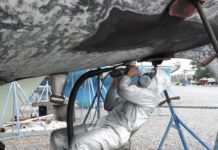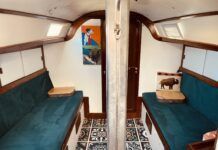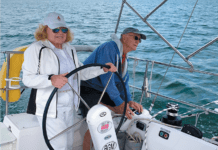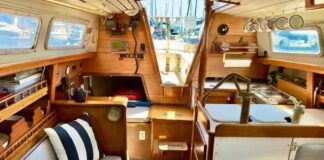Offshore Cruising
Perhaps the biggest surprise during a circumnavigation is just how critical the engine is to a cruising sailboat. Running under power for almost 25 percent of the miles that passed under your keel is not unusual. The engine also provides battery charging for everything from lighting to making fresh water. It drives the refrigeration system, and makes hot water.
This percentage of time under power is not unusual. There are parts of the world where motoring is the norm, if you want to get anywhere in a rational amount of time. The South China Sea and Java Sea, for example, have notoriously light and fickle winds, as do other parts of Southeast Asia. Headed north in the upper half of the Red Sea, your two options are usually to beat into 35-knot headwinds, or wait for calm periods and motor. The same goes for parts of the Mediterranean.
When we began loading and unloading for a voyage, the sheer volume of parts and service items for the engine and its associated systems are pretty indicative of how much you count on it.
Engine spares are among the heaviest, space-consuming, and expensive items you will carry on your boat. It’s true that you can get basic engine consumables in all but the most remote parts of the world. It’s also true that relying on local sources of supply in out-of-the-way places can add an enormous amount of stress to your cruising.
Even in areas of the world where engine spares are readily available-Singapore or Australia, for example-it may be a logistical nightmare to try to get to the local source of supply, or they may not have what you need in stock at that particular moment. In countries with language and cultural barriers to easy communication, finding parts may be frustrating or impossible. If it’s not in stock, you can’t count on getting it in a rational timeframe. The bottom line is simple: carry it with you.
For more tips and details on cruising offshore, purchase Beth Leonards book The Voyagers Handbook today!








































